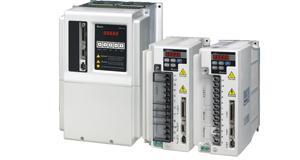How to determine the inertia of Delta servo motor
In the selection and debugging of Delta servo system, I often encounter inertia problems. The specific performance is as follows: In the selection of Delta servo system, in addition to considering the torque and rated speed of the motor, it is also necessary to calculate the moment of inertia of the mechanical system into the moment of inertia of the motor shaft, and then according to the machine tool The actual movement requires processing. The quality requirements of the parts select the motor with the appropriate inertia size; during the commissioning process, the correct setting of the inertia ratio parameter is a prerequisite for fully utilizing the performance of the mechanical servo system. This is especially true for systems that require high speed and high precision, so there is an inertia matching problem. How to determine "inertia matching"? The drive inertia has an impact on the accuracy, stability and dynamic response of the servo system. The inertia is large, the mechanical constant of the system is large, and the response is slow, which will cause the natural frequency of the system to drop, and it is easy to generate resonance, thus limiting the servo bandwidth, affecting the servo accuracy and response speed, and the proper increase of the inertia is only improving. It is advantageous when crawling at low speed. Therefore, the mechanical design should minimize the inertia without affecting the stiffness of the system. When measuring the dynamic characteristics of a mechanical system, the smaller the inertia, the better the dynamic response of the system; the larger the inertia, the larger the load of the motor, the more difficult it is to control, but the inertia of the mechanical system needs to be compared with the motor inertia. Matching is OK. Different institutions have different choices for the principle of inertia matching and have different performances. Different mechanism movements and processing quality requirements have different requirements on the relationship between JL and JM size, but most of them require the ratio of JL to JM to be less than ten. In short, the determination of inertial matching needs to be determined according to the mechanical process characteristics and processing quality requirements. For basic metal cutting machines, for servo motors, the general load inertia is recommended to be less than 5 times the motor inertia.


